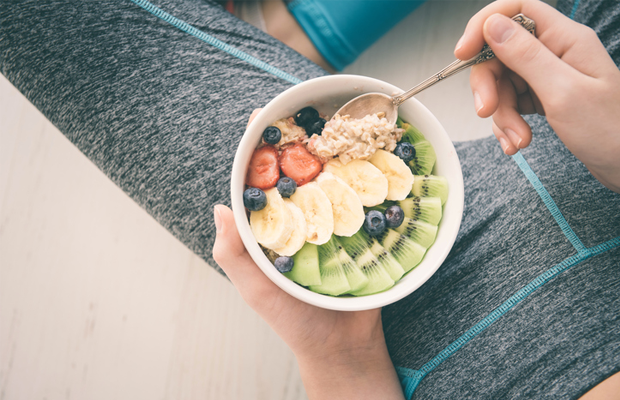
Kilojoules are those little units of energy we consume whenever we eat, well, anything. And they are arguably the most talked about part of any weight-loss journey.
The general rule is that if you eat more kilojoules than you use, you’ll gain weight. And if you take in fewer kilojoules than you use, you’ll lose weight. And if those numbers are more or less even, your weight will stay about the same.
It seems simple, but the number of kilojoules you need to lose weight, maintain weight or gain weight from lean muscle depends on your activity levels, body size, hormones, sleep and more, explains registered dietitian Wesley Delbridge, a spokesman for the Academy of Nutrition & Dietetics.
So figuring out how many kilojoules you need per day can be complicated.
And, it’s also important to remember that, when it comes to cutting kilojoules for weight loss, lower is not always better.
According to the American College of Sports Medicine, your kilojoules should never dip below 5 020.
That’s because most women, unless they are very small, will burn more kilojoules than that doing literally nothing, says registered dietitian nutritionist Jonathan Valdez, owner of Genki Nutrition and a spokesperson for the New York State Academy of Nutrition and Dietetics.
“Less than that and you could shock your body into starvation mode, which will slow your metabolism, decrease your muscle mass, and likely keep you from getting the nutrients you need to sustain daily activity,” Delbridge explains.
Read more: Your guide to carb cycling for weight loss
So, if you’re asking yourself, “How many kilojoules do I need a day?” read on as experts explain what you need to know to get your kilojoule intake just right.

How to determine your base kilojoule needs
In order to figure out how many kilojoules you need to lose or gain weight, you first need to determine how many you need to maintain.
Guidelines say young women should aim for 7 531 to 10 041 daily kilojoules, depending on age and activity level, but that range isn’t necessarily tailored to your specific needs – so it’s not as precise as it could be.
For a more exact number, start by finding your basal metabolic rate (BMR), which is the minimum number of kilojoules your body burns at rest, suggests physical therapist Grayson Wickham, founder of Movement Vault.
Your BMR accounts for 60 to 75% of your total daily kilojoule burn, according to a review in Medicine and Science in Sports and Exercise.
“To most accurately calculate your BMR, you’d need to go to a lab to have your carbon dioxide and oxygen analysed after having fasted for 12 hours and slept for eight. But, that can be a little pricey and a rough estimation of your BMR can be found using a few different equations,” says Wickham.
One study published by the Journal of the Academy of Nutrition and Dietetics found the Mifflin-St. Jeor equation to be highly accurate, so it is now considered the gold standard when it comes to calculating BMR.
For comparison’s sake, however, some experts prefer the Harris Benedict equation for determining BMR.
Read more: Are you making this huge weight loss mistake?
For women, the Mifflin-St. Jeor equation is: BMR = (10 x weight in kg) + (6.25 x height in cm) – (5 x age in years) – 161.
For women, the Harris Benedict equation is: BMR = 655.1 + (9.563 x weight in kg ) + (1.850 x height in cm) – ( 4.676 x age in years).
The results for both will be slightly different, but they’re pretty darn close, says Wickham. When you find your BMR on your own, consider it a really good estimate, not a hard-and-fast rule, he adds.
For both equations, finding your BMR requires your weight, height, age and gender (yes, guys have their own equation). Wondering why? “The more you weigh and the more mass you have, the more fuel you need to sustain your organs,” explains Valdez. That’s why people who weigh more have heavier BMRs.
Age is a factor in the equations because, as you get older, muscle mass declines by five or so percent each decade after the age of 30, Wickham explains. This might change as more women start strength training, but as a general rule, that’s fair, he says.
And if you’re wondering why the formula is different for men and women, it’s because research published in The Journal of Clinical Investigation shows that a woman’s BMR is typically around 5 to 10% lower than a man’s.
Now what? Once you know your BMR, you know the bare minimum number of kilojoules you would need to keep your body alive if you were going to lay in bed all day, says Wickham.
But you need to take into account everything else you do that burns kilojoules (walking the dog, folding laundry, climbing five floors of stairs to your apartment, bi-weekly CrossFit class, Thursday evening yoga…).
To do that, multiply your BMR by the factor that best represents your activity level.

Read more: What’s the best way to track weight loss: a measuring tape or scale?
If you are sedentary = BMR x 1.2
If you do light exercise 1-3 days a week = BMR x 1.375
If you exercise at a moderate intensity 3-5 days a week= BMR x 1.55
If you are exercise at a high intensity 6-7 days a week = BMR x 1.725
If you are into two-a-days or have a physically demanding job = BMR x 1.9
How many kilojoules you need to lose weight
Okay, so how many kilojoules do I need a day to lose weight? Once you know how many kilojoules you need to maintain your weight, you simply subtract some kilojoules to put yourself into a deficit.
How many kilojoules? Well, to lose roughly half a kilo of fat per week (a healthy goal) you need a 2 092kJ per day deficit, he explains. In other words, just delete 2 092 kilojoules from the number you found above.
But a kilojoule deficit doesn’t have to (and, in reality, shouldn’t) come solely from eating less, says Valdez. Exercise can help, too.
If you are game for taking your workouts to the next level, Valdez recommends decreasing your kilojoules from food by 1 046 per day, and increasing the intensity or duration of your workouts so that you are burning an additional 2 092 kilojoules two to three times a week through exercise.
That means if you already take a cycling class three days a week, add in a 30-minute walk two days per week to keep the kilojoule burn going. Or, if you currently live a lightly active life, consider incorporating a yoga class, strength-training class or a hike into your routine.
However, that does mean that on the days you don’t do any physical activity at all, you should decrease your kilojoule intake by closer to 2 092kJ, he says.
Your goal is to burn about 2 092 fewer kilojoules than you take in per day, through diet, exercise, or both. You do the math.
Read more: 5 weight-loss rules from nutritionists that you should break
How many kilojoules you need to gain weight from muscle
Not everyone who counts kilojoules wants to lose weight. Some want to gain it from lean, powerful muscle. Gaining weight from muscle is a great way to improve your health and even decrease your body-fat percentage.
Bonus: Since muscle is metabolically active, it can also help you shed fat without cutting kilojoules, says Wickham. When you start to gain muscle, your BMR will increase, which means that your body needs more kilojoules just to go about its daily function, he explains.
“If you want to gain weight, the simple trick is to tack on 1 046 to 2 092 extra kilojoules in healthy, whole foods per day. Every one to two weeks, you’ll have added half a kilo safely,” says New York City nutritionist Brittany Kohn.
To gain muscle without also gaining fat, you need to increase your protein to 1.8 to 2g per kilogram of body weight every day, so the majority of these additional kilojoules should come from protein, says Valdez.
And the rest should come from carbs like whole grains, fresh fruits, and vegetables, which will help power your workouts.
This article was originally published on www.womenshealthmag.com
Image credits: iStock




 Publications
Publications
 Partners
Partners














